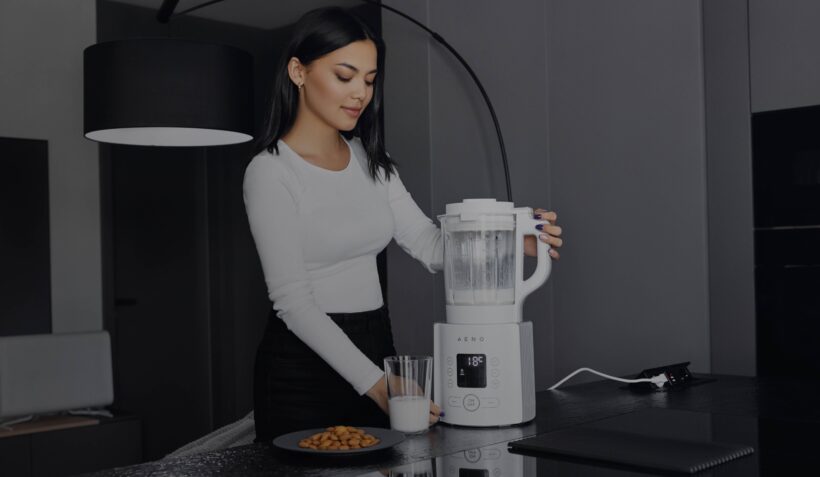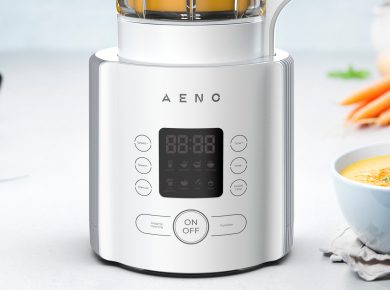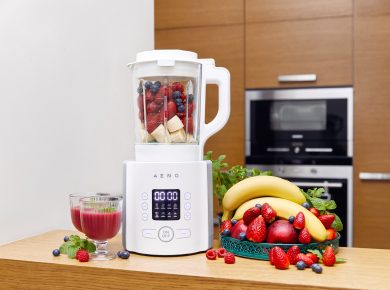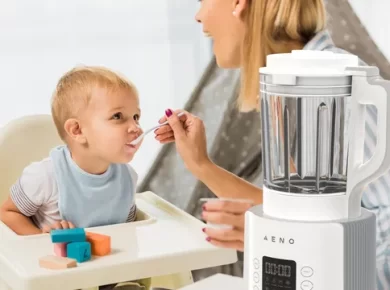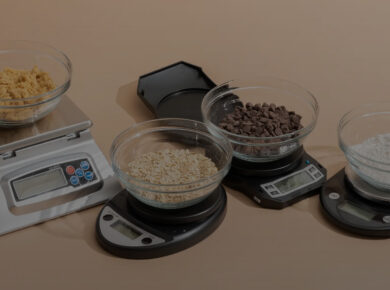A blender is a must-have in every kitchen, especially for a professional chef! This device makes chopping and mixing ingredients possible at speeds that are simply unattainable by hand. Large and compact, powerful and domestic — the range of available models is impressive. That’s why we’ve prepared the most comprehensive blender buying guide to help you understand the features, types of attachments, and other important critical options in finding the perfect solution to meet your needs.
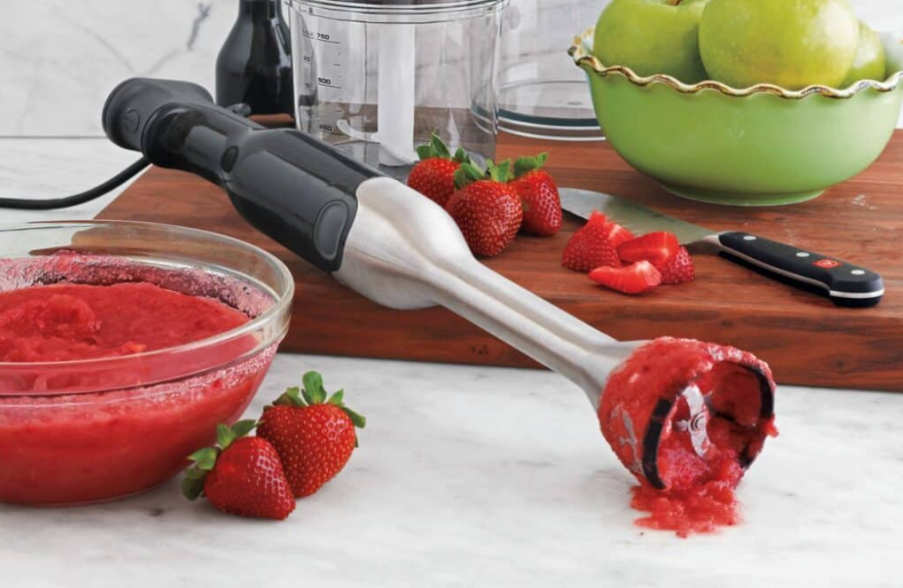
What to Look for in a Blender: How to Choose a Good Blender According to Its Type?
Blenders are divided into several main types, each offering a range of benefits.
Jar Blenders
This option is the most popular and widespread. They come in different sizes, powers, and designs, but the unifying factor is the jar where the ingredients are placed. The jar is closed and set on a working platform, and the ingredients inside are blended. This is the best option for making homemade cream soups, smoothies, and other dishes. Some jar models come equipped with an ice crusher.
Professional Multi-Functional Machines
These are sometimes called food processors because the variety of attachments and working modes allows for grating vegetables, slicing ingredients, mixing, making cream, whipping dough, and even extracting juice. Combining so many functions, professional multi-functional models are significantly more expensive than their counterparts but offer a solution that can replace several different tools with just one quality appliance.
Immersion Blenders
These look like a 4-blade knife attached to an elongated handle. This knife makes it easy to chop vegetables for cream soups, whip up smoothies, and make purée. Some immersion blenders offer different attachments for chopping, whipping, and grating ingredients. The various attachments make it a versatile tool for all kitchen experiments. Some immersion models work autonomously on a battery, making them a convenient and mobile solution.
Compact Personal Blenders
You can use these as shakers to prepare coffee with thick, stable milk foam or to make a portion of meringue. Personal models are often battery-operated and have become incredibly popular recently.
What to Look for in a Blender?
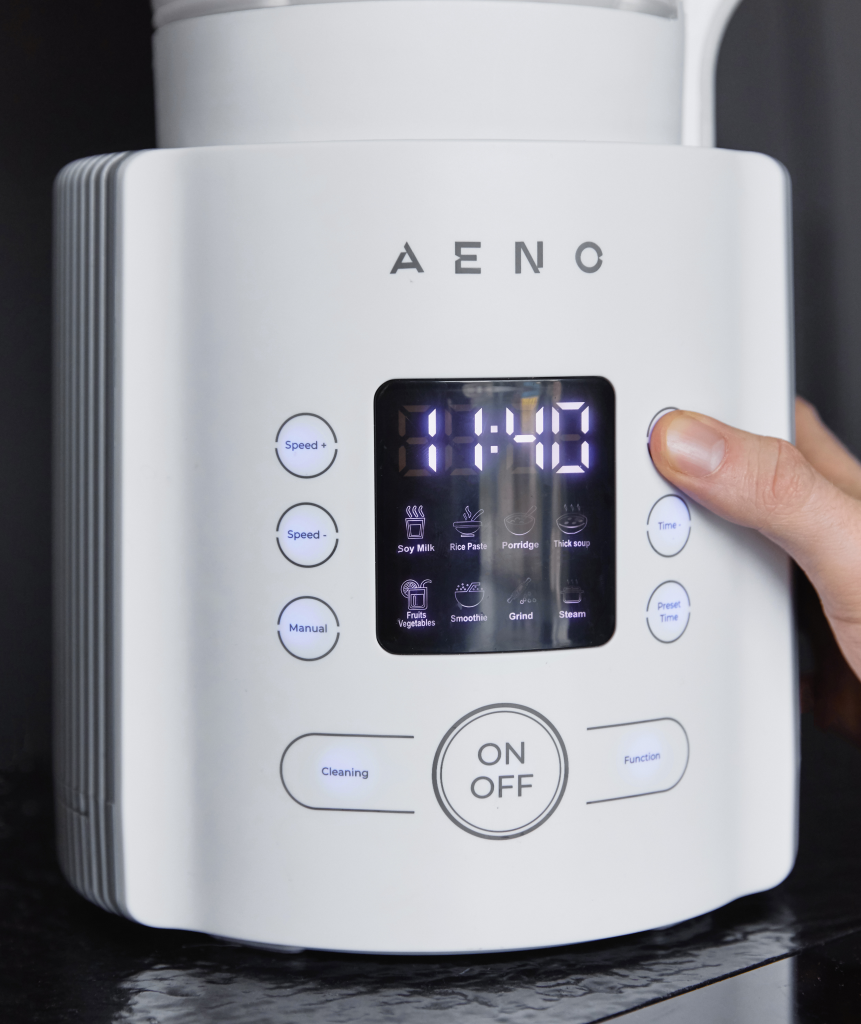
To choose a quality appliance, pay attention to key factors that affect its efficiency. Let’s see how to choose blender.
Right Size
Blenders come in large industrial sizes for tasks in restaurant and café kitchens. Smaller blenders are perfect for regular home use. If you need to prepare a few servings or puree for your family, household models are cheaper and more compact, making them a better fit.
Blade Quality
Whether it’s an industrial or household blender, its blades should be strong, corrosion-resistant, and sharp. This will ensure faster task completion, and the appliance will last longer. The blades shouldn’t bend, even when crushing ice. One of the famous blender commercials showed how it could even crush smartphones. The brand that launched this ad gained worldwide popularity, thanks to the super-strong and high-quality blades.
Rotation Speed and Power
These two characteristics go hand-in-hand since higher power means greater attachment rotation speed. Typically, a blender’s power ranges from 300 to 1500 watts. Models with 300–600 watts are optimal for smaller tasks like blending soft fruits into smoothies or making purée. A power of 800–1500 watts is needed for working with tougher ingredients such as nuts, ice, or fibrous foods (like meat, for example). More powerful appliances can ensure higher blade speeds, thus working more efficiently. The most powerful models usually offer 5 to 10 speed settings, while lower-powered tools often provide little to no speed variation, offering a maximum of 2–5 options. Speed settings are crucial for determining the texture and consistency of the dish, which is especially important for recipes where it directly affects the final taste.
Additional Features
- Ice crushing. Models with this feature have more durable and high-quality blades, so if the model’s specifications mention this option, it’s a sign of a quality product.
- Heating ability. This allows you to heat ingredients directly in the blender, not just chop or mix them.
- Automatic programs. These significantly simplify working with different recipes since the appliance can use preset settings to perform a task correctly.
Special Attachments
Simple and affordable models offer only one attachment for chopping, mixing, or grating food. More advanced tools allow you to switch attachments based on your needs. The most popular attachments are:
- Accessory for chopping hard or fibrous foods, like meat, potatoes, or nuts.
- Whisks for whipping perfect ice cream, meringue, cream, or batter for sponge cakes.
- Dough kneading attachments help prepare the dough for ideal consistency. This requires the appliance to be more powerful, as working with dough is much harder than blending bananas. If you choose a device with this attachment, be sure the tool can handle the task. If you work with baking at a professional level, consider purchasing a planetary mixer, which excels at kneading dough to perfection.
- Travel cups allow you to mix a delicious drink right in the travel cup without having to pour the contents from the jar into a separate container.
- Graters help prepare ingredients for salads, soups, or other dishes. Just like immersion blenders, these attachments should have perfectly sharp and strong blades, and the appliance should have enough power to handle the task.
Jar Material
Most professional blenders have special metal or plastic jars for working with different types of ingredients. For jar blenders, this jar is placed on top, with the blades at the bottom. The type of jar you choose will determine how easy it is to clean and how long it will last, as well as its resistance to potential mechanical damage. The most popular and common options are:
- Plastic jars. The most common but also the least durable, prone to scratches.
- Glass jars. They are more hygienic, do not absorb odors, and are easy to clean but fragile and more expensive than plastic ones.
- Stainless steel jars. The ideal combination of durability, hygiene, and health safety. Most professional blenders are equipped with stainless steel jars as they can be cleaned in a dishwasher and used in different ways.
In terms of capacity, jars can range from 14 ounces in home blenders to 64 ounces in professional ones.
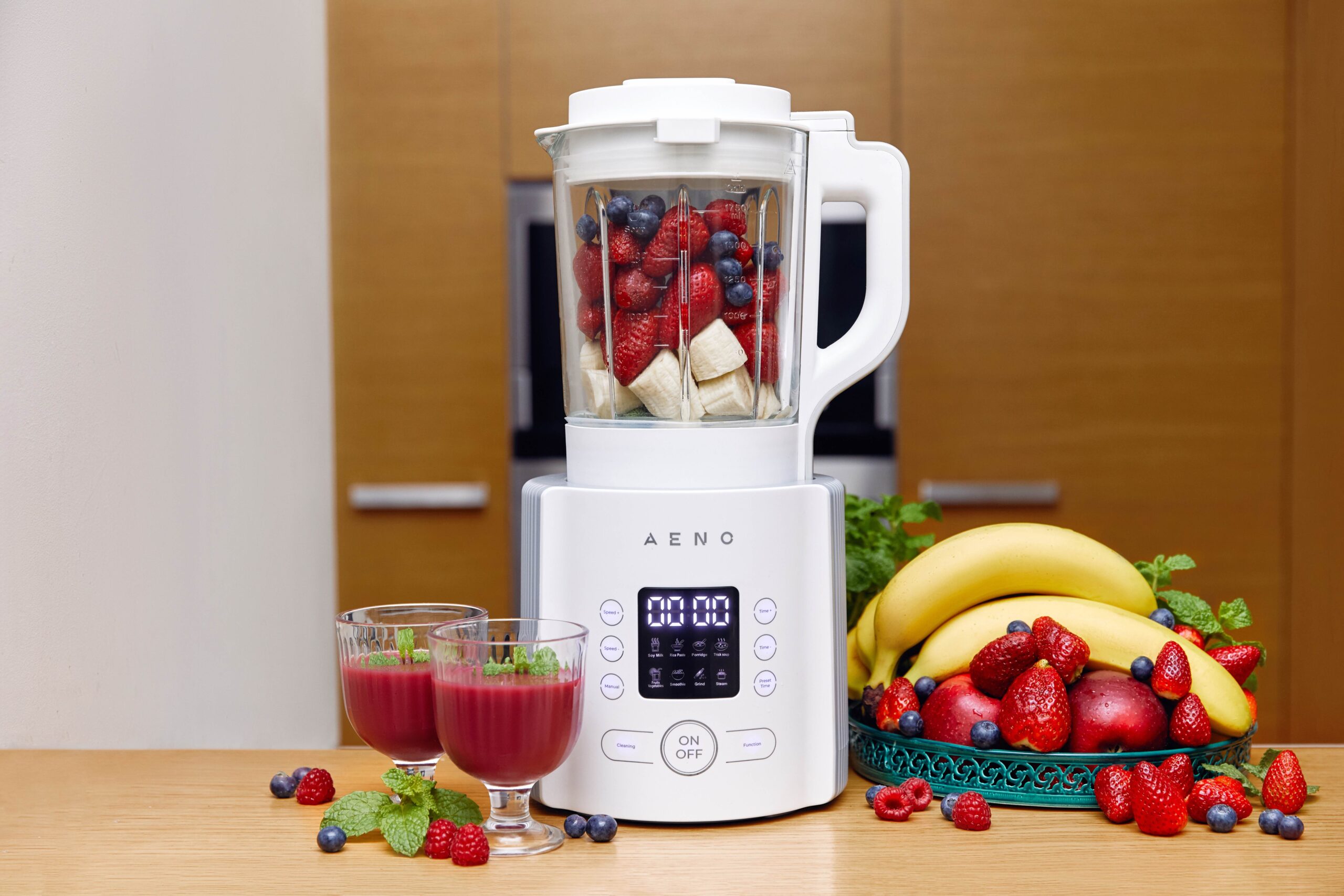
Determine Your Blender Budget
Blenders on the market range from $20 to $500 and more. The price depends on the brand, functionality, power, available attachments, durability, etc. So, start by considering the budget you’re willing to spend on this purchase. There are excellent models in every price range that can meet your needs. Of course, this requires the buyer to do a little research to find the perfect option. However, this research will be a great and rewarding investment in a quality and long-lasting kitchen tool.
Want to BUY this product?
Check out retailer list for your country.
